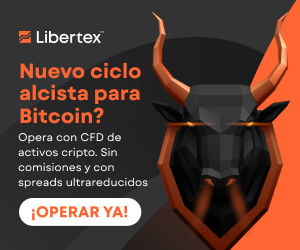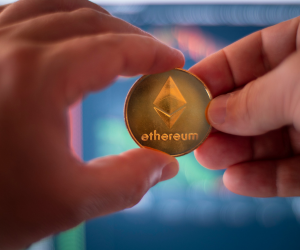This guide explains the differences between hot wallets and cold wallets, detailing what they are, how they work, and when it's best to use each type to secure your cryptocurrency investments.

What is a hot wallet
In the world of cryptocurrencies, a hot wallet is a digital wallet connected to the Internet that allows you to store, send, and receive digital assets quickly and easily. These wallets are ideal for active traders who need immediate access to their funds to take advantage of opportunities in the volatile cryptocurrency market.
Main features of a hot wallet:
Constant Internet connection: Facilitates quick transactions and accessibility from anywhere.
Ease of use: Intuitive and user-friendly interfaces for users of all levels.
Variety of formats: Available as mobile applications, web, or desktop software.
Advantages of hot wallets:
For traders operating on exchanges like Binance or Coinbase, hot wallets are essential. They allow for rapid fund movements, which is crucial when the market experiences sharp fluctuations. For example, if you're in Madrid and spot an opportunity to buy Bitcoin at a low price, a hot wallet allows you to execute the transaction instantly.
Types of hot wallets:
Desktop wallets: Software installed on your computer, like Electrum or Exodus.
Mobile wallets: Applications on your smartphone, such as Trust Wallet or Mycelium.
Web wallets: Services accessible from browsers, like MetaMask or the integrated wallets of exchanges.
Associated risks:
Despite their convenience, hot wallets are more vulnerable to cyber-attacks. Being connected to the Internet, they can be targeted by hackers and malware. Imagine a trader in Buenos Aires suffers a phishing attack and loses access to their wallet. Security is a critical aspect to consider.
Good security practices:
Two-factor authentication (2FA): Adds an extra layer of security to your wallet.
Strong passwords: Use complex and unique combinations.
Regular updates: Keep your software up to date to protect against vulnerabilities.
When to use a hot wallet?
If you are an active trader making daily or weekly transactions, hot wallets are indispensable. They allow you to react quickly to market trends and take advantage of arbitrage opportunities between different exchanges.
What is a cold wallet
Unlike hot wallets, a cold wallet is a cryptocurrency wallet that operates without an Internet connection, providing a higher level of security for your digital assets. These wallets are ideal for storing large amounts of cryptocurrencies in the long term, minimizing the risk of cyberattacks.
Main characteristics of a cold wallet:
Offline storage: Private keys are kept offline, out of hackers' reach.
Physical types: They can be hardware devices or even printed documents.
Maximum security: Considered the safest option for storing cryptocurrencies.
Types of cold wallets:
Hardware wallets: Devices like Ledger Nano S or Trezor, which store your private keys in a secure environment.
Paper wallets: Private keys printed on paper, often with QR codes to facilitate future transactions.
External storage devices: USBs or hard drives dedicated exclusively to storing private keys.
Advantages of cold wallets:
For investors who accumulate cryptocurrencies like Bitcoin or Ethereum with a long-term outlook, cold wallets offer peace of mind. For example, an investor who has acquired Bitcoin since 2015 could store their coins in a cold wallet to protect them from online threats.
Risks and considerations:
Physical loss: If you lose the device or the paper where your keys are, you could lose access to your funds.
Less accessibility: Performing transactions is slower and less convenient than with a hot wallet.
Initial cost: Hardware devices can be expensive, but it's an investment in security.
Good security practices:
Key backup: Keep backups in safe places.
Trusted environments: Set up your cold wallet in private and secure locations.
Firmware updates: Keep your hardware device updated to protect against vulnerabilities.
When to use a cold wallet?
If you're an investor who prefers the "HODL" (Hold On for Dear Life) strategy and plan to keep your cryptocurrencies for years, a cold wallet is your best option. It provides maximum security for large amounts of digital assets.
When to Use Each Type
Choosing between a hot wallet and a cold wallet depends on your specific needs as a cryptocurrency trader or investor. Understanding when to use each type is crucial for balancing security and accessibility.
Use a hot wallet when:
You trade frequently: If you regularly buy and sell cryptocurrencies, you need quick access to your funds.
You manage small amounts: For limited funds, the risk is lower and convenience is key.
You participate in DeFi and DApps: Hot wallets are necessary for interacting with decentralized finance protocols.
Practical example: Sofia, a trader, uses a hot wallet for daily operations on decentralized exchanges, taking advantage of market fluctuations for quick profits.
Use a cold wallet when:
You store large amounts: Protect significant investments from potential online attacks.
You plan for the long term: If your strategy is to hold assets for years, security is a priority.
You don't need immediate access: You're willing to sacrifice speed for protection.
Practical example: Miguel, an investor, keeps his savings in Bitcoin in a cold wallet, trusting in the long-term growth of the cryptocurrency.
Combined Strategy:
Many experts recommend using both options. Keep a limited amount in a hot wallet for daily operations and the rest in a cold wallet for secure storage. It's similar to diversifying your investment portfolio to minimize risks.
Final Tips:
Assess your needs: Define whether you are more of a trader or a long-term investor.
Stay updated: The crypto world evolves; keep informed about the best security practices.
Don't share your keys: Regardless of the type of wallet, your private keys are the gateway to your funds.
Final Reflection:
The choice between a hot wallet and a cold wallet is a strategic decision that affects the security and efficiency of your cryptocurrency operations. As Satoshi Nakamoto, the mysterious creator of Bitcoin, said: "If you don't care, I don't either." The responsibility to protect your digital assets falls on you. Make informed decisions and adjust your strategy to your financial goals.







